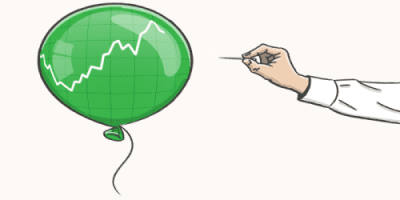Currency Wars: “Beggar Thy Neighbor” Policy
April 3, 2025
 Currency Wars: “Beggar Thy Neighbor” Policy
Currency Wars: “Beggar Thy Neighbor” Policy
What is a Currency War ? A currency war is a situation wherein devaluation of currency by one country is retaliated by a competitive devaluation from the other country. For instance if the United States were to devalue the dollar against the Pound Sterling and if the British retaliated with their own devaluation then the…
 Cryptocurrencies and Taxation
Cryptocurrencies and Taxation
Taxation has a major impact on the return that any investment generates. This is the reason why it is important to understand the impact of taxation on cryptocurrencies. However, since cryptocurrencies are relatively new, there is considerable ambiguity regarding the taxability of cryptocurrencies. In this article, we will have a closer look at some of…
 Common Terminologies Used in Forex Markets
Common Terminologies Used in Forex Markets
Financial markets have their own terminologies. The Forex market has a number of terms which it shares with other financial markets but which mean different things in the Forex market. Also, there are some words which are completely unique to Forex. In this article, we have a closer look at Forex terms. These terms will…
2017 has been an exceptional year for stock markets across the world. The start of 2018 has been no different at all. This has got many people wondering whether we are in a manic phase. There is no reason why this possibility should be ruled out.
The Dow Jones Index has seen an uptick in every month of the previous year. There has been no discernable reason for the index to rise so fast. This has got many investors wondering whether they are in a melt-up phase.
A melt up phase is the run-up to a crash. Here asset prices increase at an alarming rate driven by nothing but positive sentiment. This situation aptly describes what is happening to equities all over the globe.
There are many analysts who do believe that we are in a bubble. On the other hand, many do believe that this isn’t a bubble. In this article, we will have a closer look at both sides of the argument.
The ratio had a value of 148% just before the dot come bubble of 2001 exploded. Hence, if this indication is to be believed, the stock market in America is highly overvalued right now. The situation is no different for stock markets world over. This may be one of the biggest bubbles in the history of the world.
The average PE ratio for the New York Stock Exchange hovers around 21. It has almost doubled and now stands at 40. Many people believe that this is because the markets expect increased profitability in the future. However, there is no reason to be optimistic as of now.

Most companies have registered run of the mill mundane performances. However, valuations seem to be growing at an incredibly fast pace. This makes it sound eerily similar to the tech bubble of 2001 when the valuations were soaring to record levels without any reason.
No one is investing in instruments such as certificates of deposit etc. Almost all the money has found its way into the stock market.
Many analysts believe that soon the interest rates will rise and the party will be over. Fed chairman Janet Yellen has already raised the interest rates. This is likely to continue in the future as well.
Consider the fact that Jezz Bezos has become the richest person in the world during this period. He has more wealth than Bill Gates ever had!
Also, note that Netflix stock has grown by 2500% during the past five years. Although both Amazon and Netflix are companies with strong fundamentals, the valuations seem to be a bit stretched.
Right now, the inflation rate in the USA is not growing at an alarming rate. Hence, the probability of a steep rate hike is dismal. Therefore, even if it is a bubble, this one is likely to be sustained for some time.
Companies and banks have both been careful to avoid irresponsible lending. Also, companies have not hired too many people and taken up liabilities.
Crashes can only be predicted in hindsight. This is because, before the crash, there are always different arguments that try to convince people that “this time it is different”.
All major investors have warned that the Bull Run might be over and bears might take over in the next 12 to 18 months phase.
Your email address will not be published. Required fields are marked *